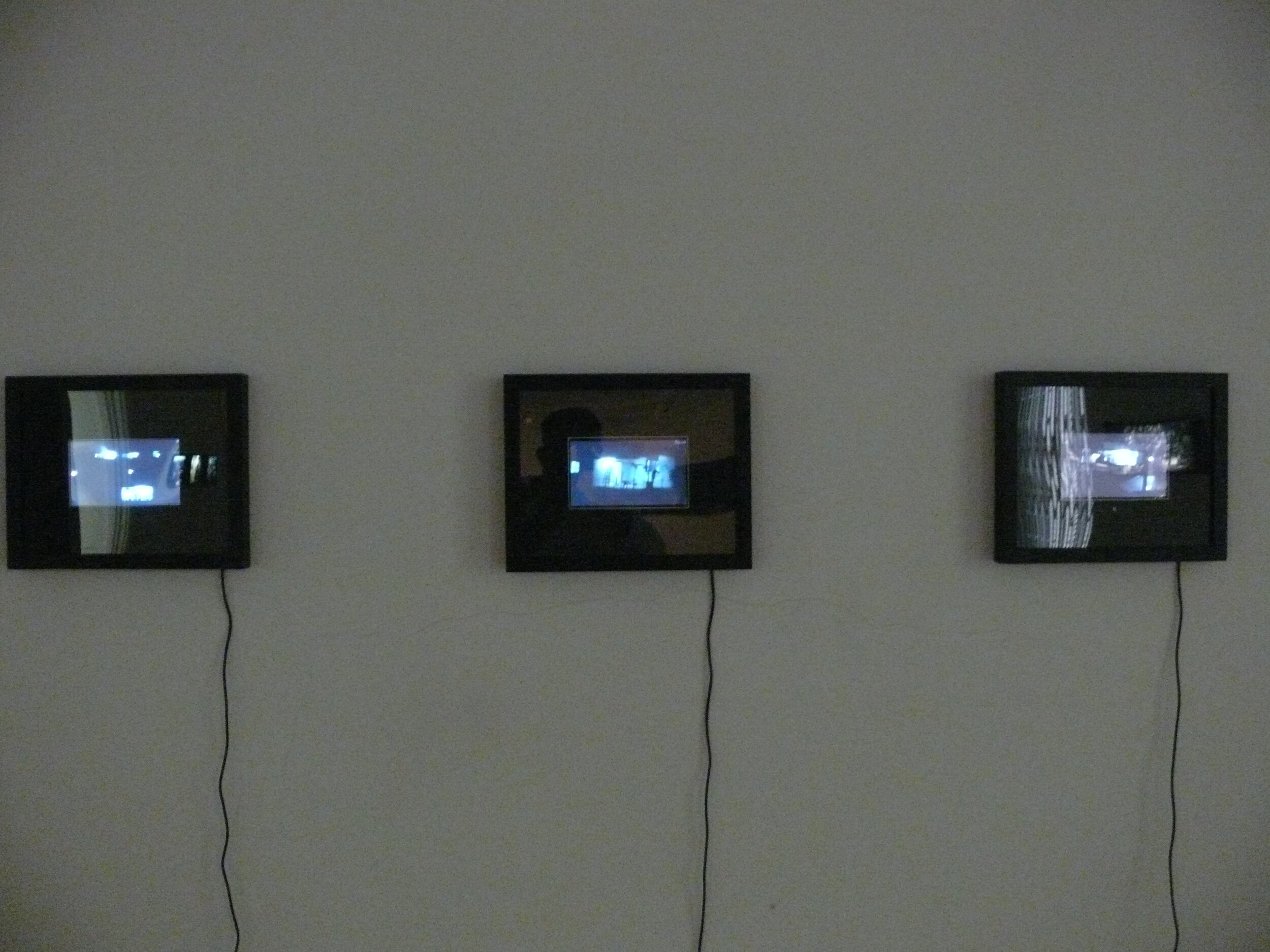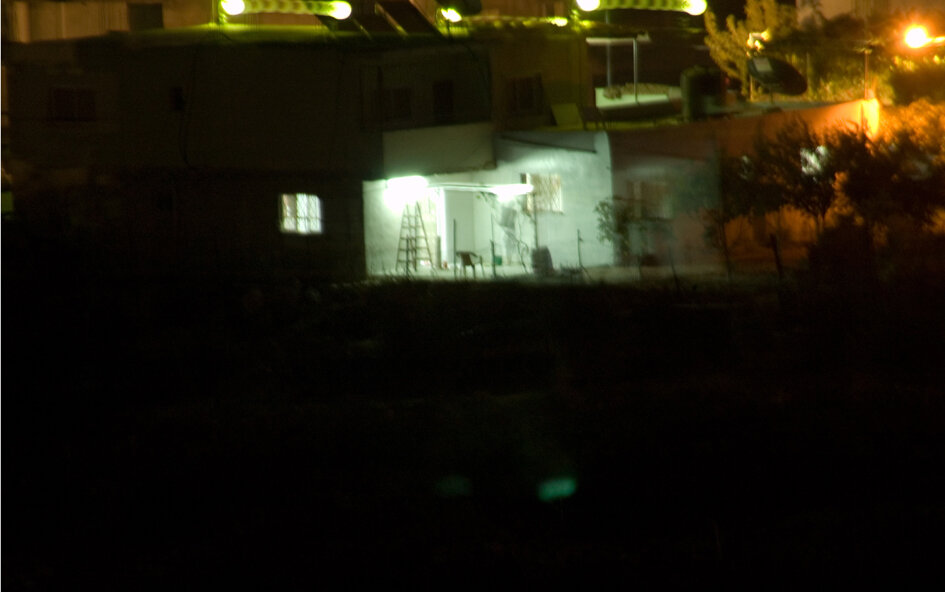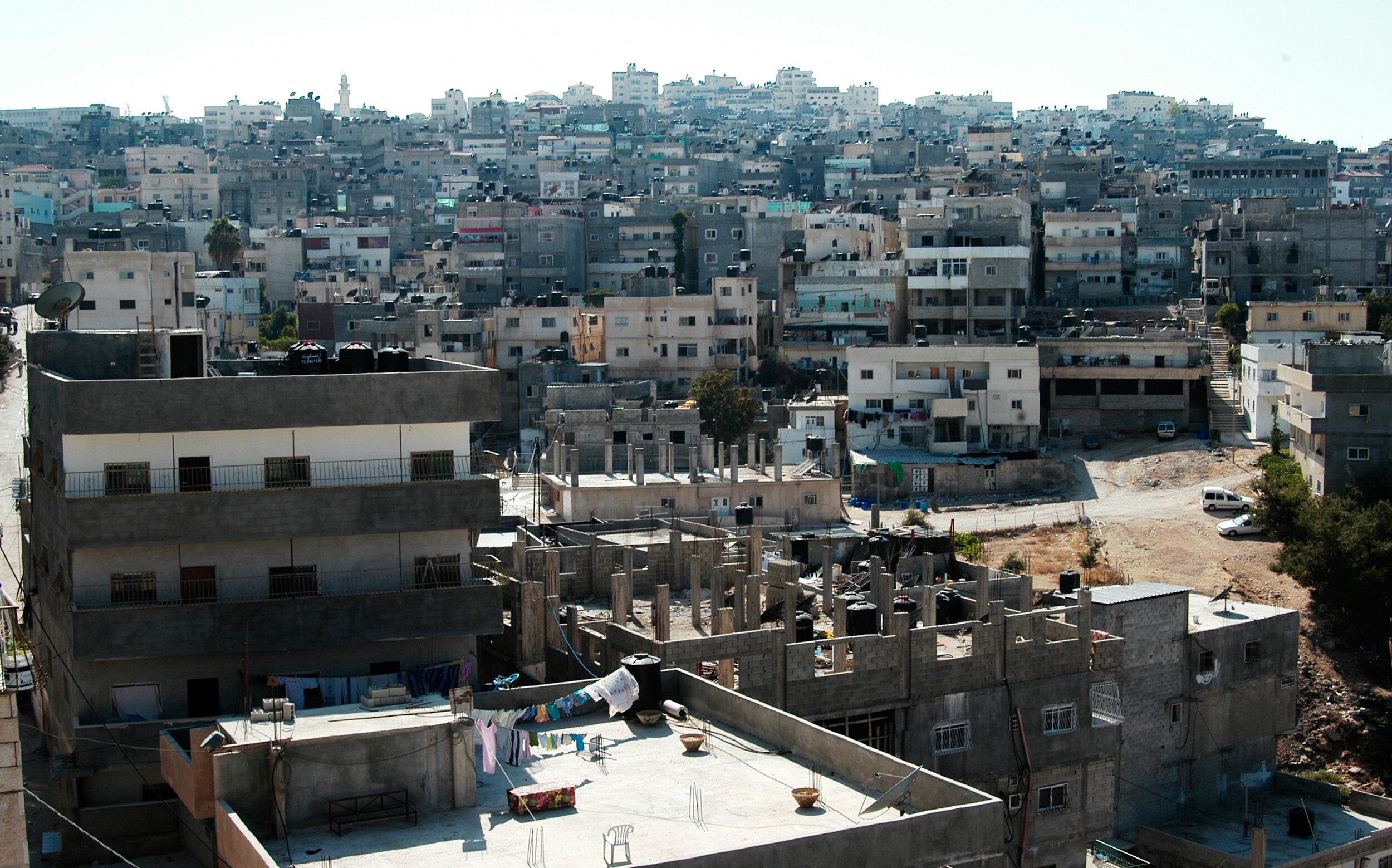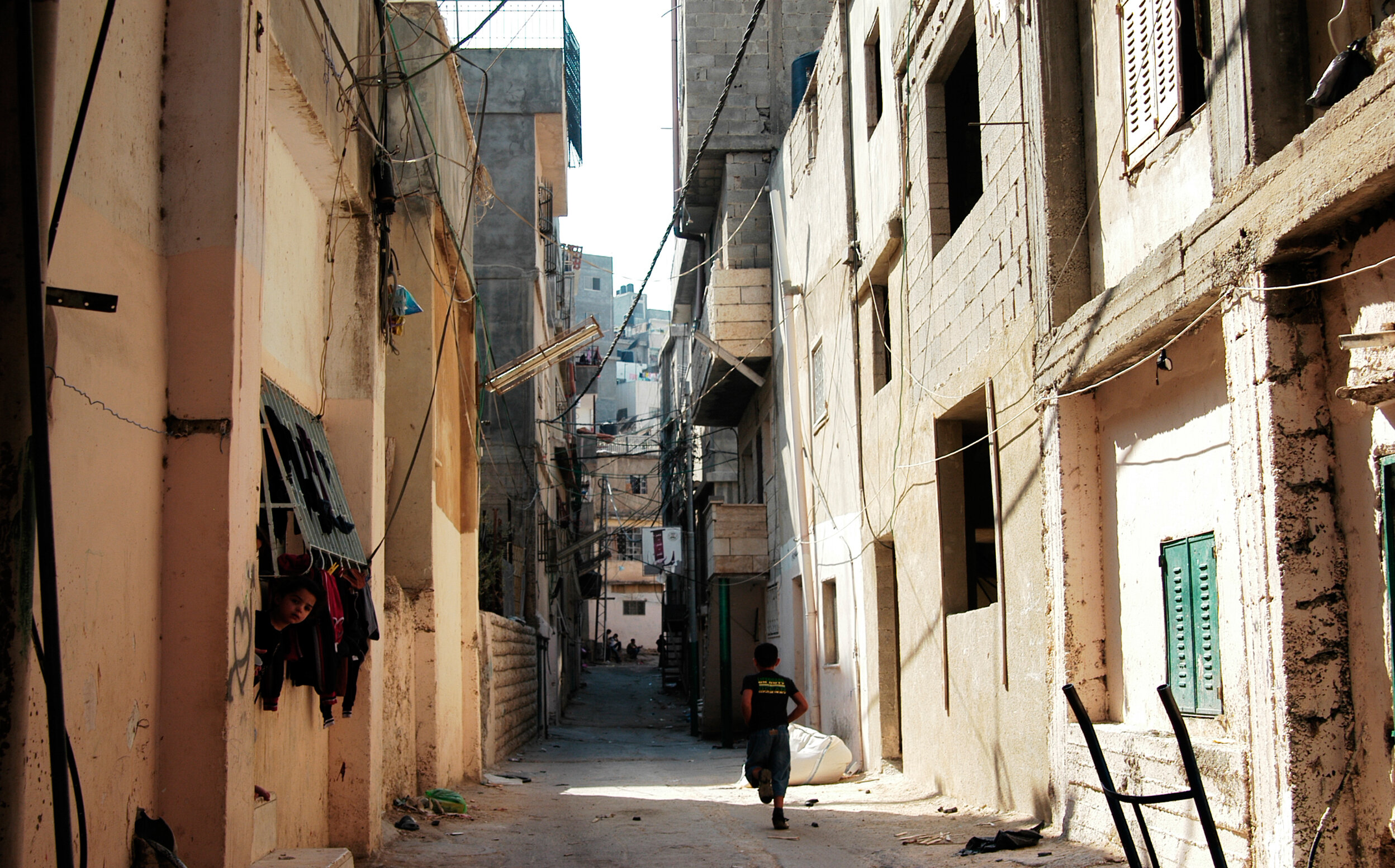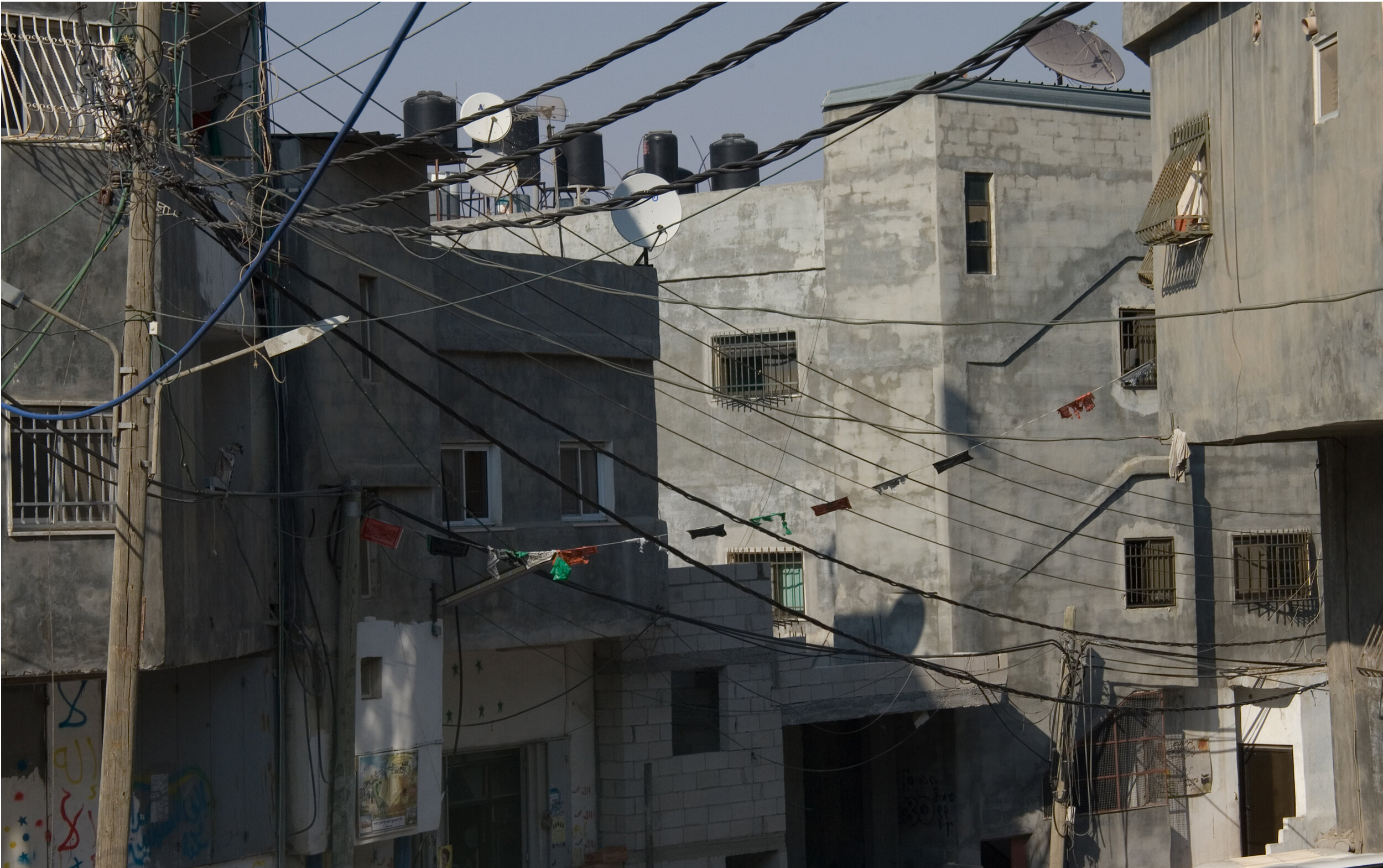House No. 197
This series of work explores marginal space of Jerusalem’s refugee camp and is inspired by the desire to create an alternative image of the traditional tourist image of Jerusalem. Photographed from the nearby Israeli settlement, the panoramic images reveal the intensely accumulative topographies of the built environment that have become a testimony of dislocation. The photographs are taken from within the confines of the camp expose narrow passageways and explore the legacy of waiting and the precariousness of daily life. The haphazard and chaotic concrete forms speak of aspiration, and urges of reproduction and inheritance: “Concrete particularly draws my attention, the way in which this material is supposed to provide structure and stability, yet in the camp’s architecture it suggests the opposite. Building is always postponed in the hope of return, however circumstances dictate need, which is reflected in the haphazard built structures”. A constant temporality, which also informs the works has shaped the culture of the camp, and inevitably vacated time of meaning which appears monotonous, mundane and endless, while the control of space takes on a new precedence.





